Bois Gravés: An Artist’s Response to Loss
“. . . le dessin de Madame Orloff est expressif. Elle en donne la valeur dans ses bois gravés, très robustes, qui ne s’arrêtent point au détail inutile, accusent le caractère du modèle. . . . Ils sont criants de vérité.”
Gustave Kahn dans les feuillets d’Art (juillet 1922)
“Madame Orloff’s drawing is expressive. She gives value to her very robust wood engravings, which do not stop at any unnecessary detail, showing the nature of the form.
. . . They are true to life.”
Gustave Kahn in les feuillets d’Art (July 1922)
Epigraph translated from French by Addy Gravatte.
Chana Orloff was a twentieth-century sculptor with a distinguished career, but our attention here centers on her response, through art, to personal loss as a young artist widowed by the 1918 influenza pandemic.
Orloff married the Warsaw-born poet Ary Justman in 1916. Both artists had published in the avant-garde SIC (a magazine founded by Pierre Albert-Birot) alongside of Birot, Guillaume Apollinaire, and other writers and artists. In 1916, Réflexions Poétiques appeared as an “SIC edition” containing poems by Justman (which he himself translated from his native Polish into French) alongside drawings, woodcuts, and photographs of sculptures by Orloff.
The couple’s son was born in 1918, but Justman became ill in early 1919 and died of influenza. Willi Naomi Mendelsohn, in “Sculpting Identities: Chana Orloff and her Portraits,” writes:
Justman contracted Spanish flu after the armistice, like his friend Guillaume Apollinaire, while working with the Red Cross. He died only eight days after his son’s first birthday. After the tragedy of her husband’s death, Orloff’s many close friends came to her aid. She published a book of wood engravings with eleven portraits meant to honor friends who had helped her through that difficult period. Ten of these engraving were of women, and one was of her son.
While Blackbird found multiple mentions of Orloff’s Bois Gravés, trying to find the definitive lists of images was more elusive. Our discovery of the 1919 “Table des Planches” at an Australian auction site allowed us to search for digital captures of all eleven images—which, to the best of our knowledge, do not appear collected anywhere as a single collection online. (We found no ready access to a print copy of the work.)
Seven of the group of woodcuts were retrieved from chana-orloff.org, which is operated by Orloff’s grandchildren. The remaining were scouted from art auction sites. The image of Portrait de Mlle Ch. Dallies, unlabeled and at a low resolution, was found nearly by chance on a Pinterest site and completed the set.
Bois Gravés
album of 11 woodblock prints on paper
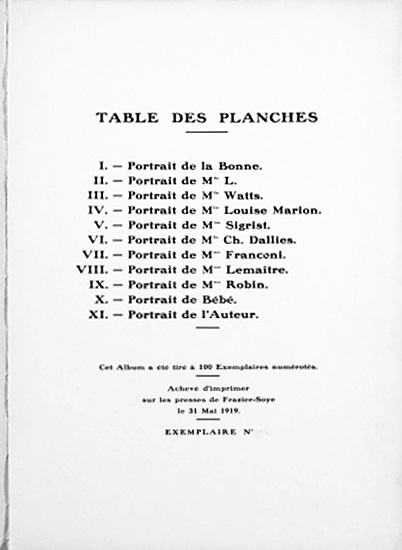 |
| Table des Planches Cet Album a été tiré a 100 Examplaires numérotés. Achevé d’imprimer EXEMPLAIRE N° 59 |
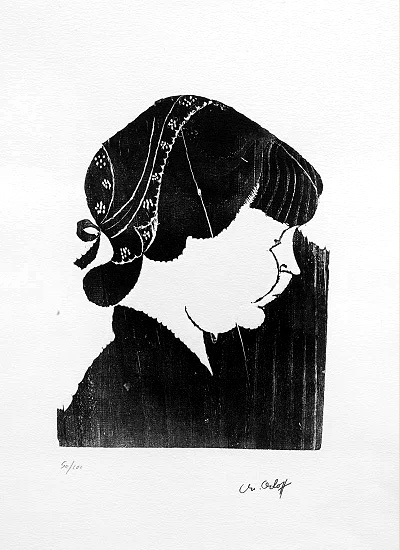 |
| Portrait de la Bonne |
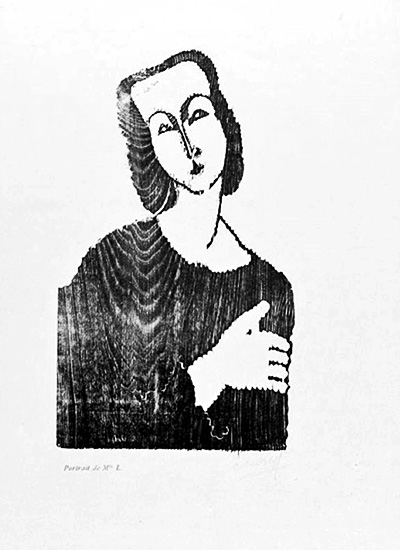 |
| Portrait de Mlle L. |
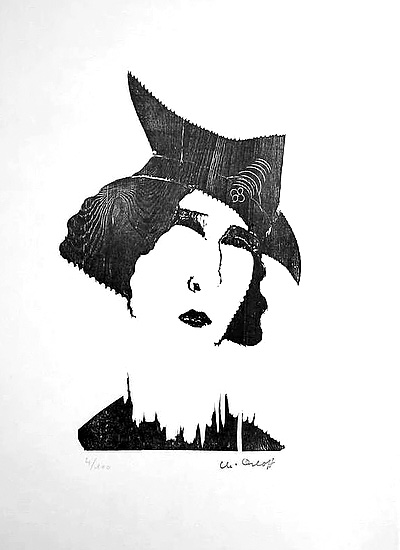 |
| Portrait de Mlle Watts |
 |
| Portrait de Louise Marion |
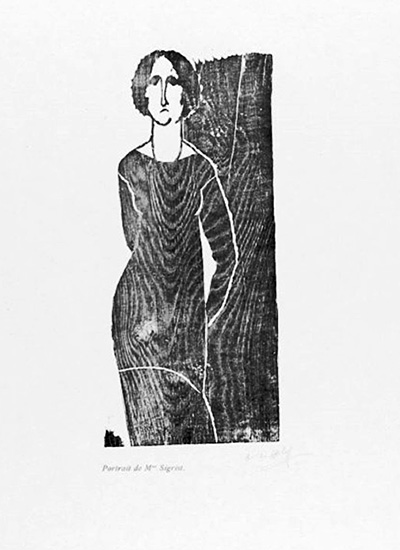 |
| Portrait de Mme Sigrist |
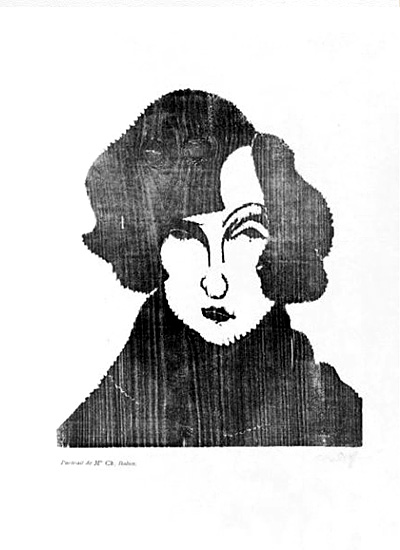 |
| Portrait de Mlle Ch. Dallies |
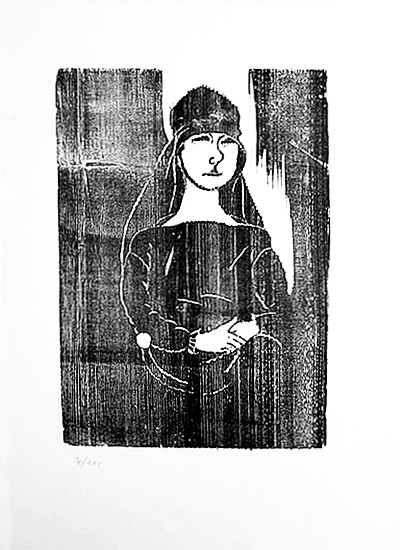 |
| Portrait de Mme Franconi |
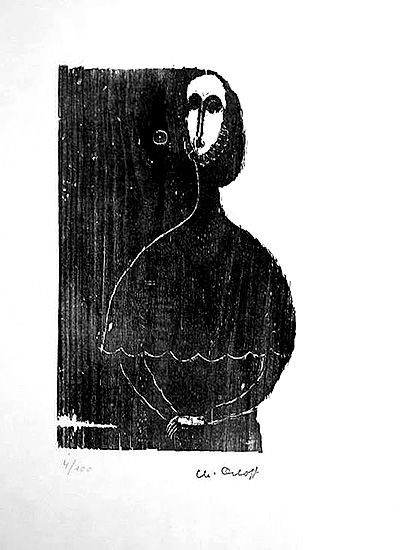 |
| Portrait de Mme Lemaitre |
 |
| Portrait de Mme Robin |
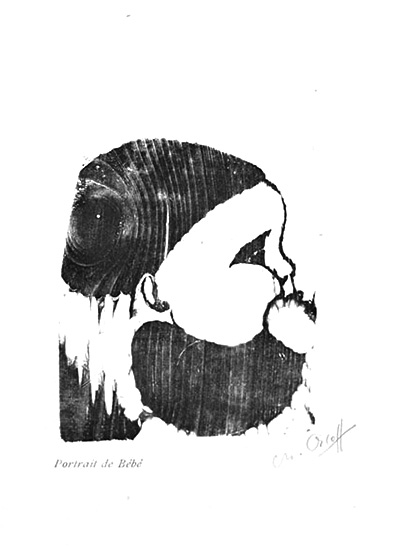 |
| Portrait de Bebe |
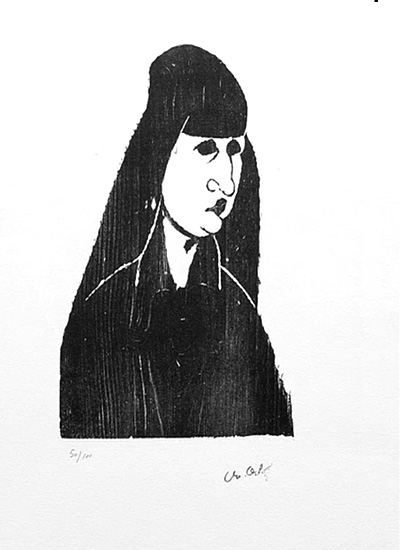 |
| Portrait de l’Auteur |
Contributor’s Notes
1918 Suite ![]()